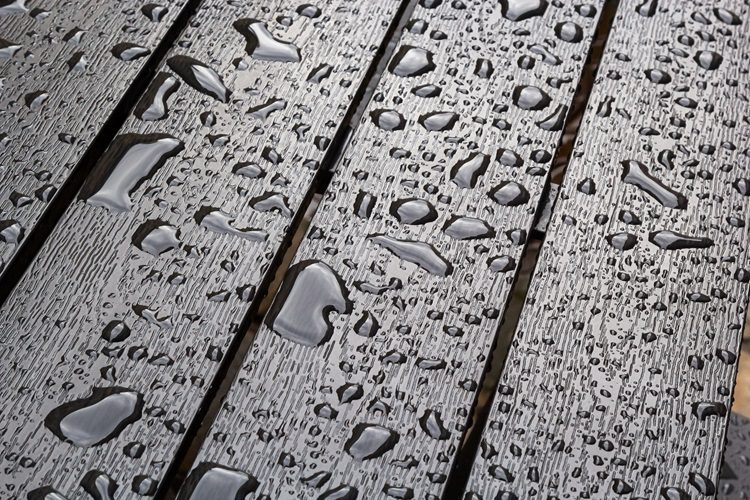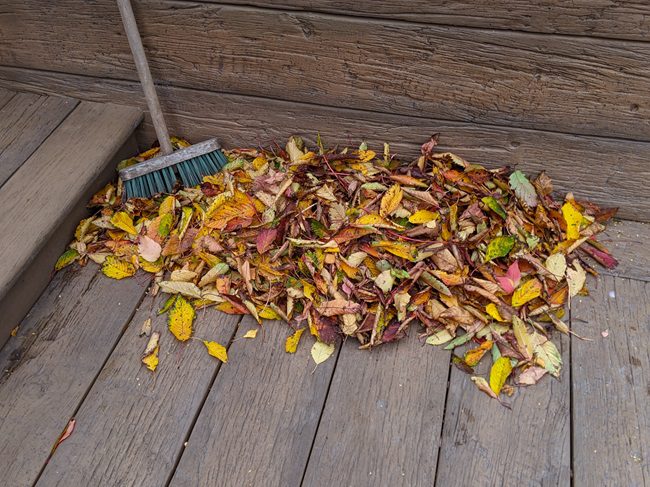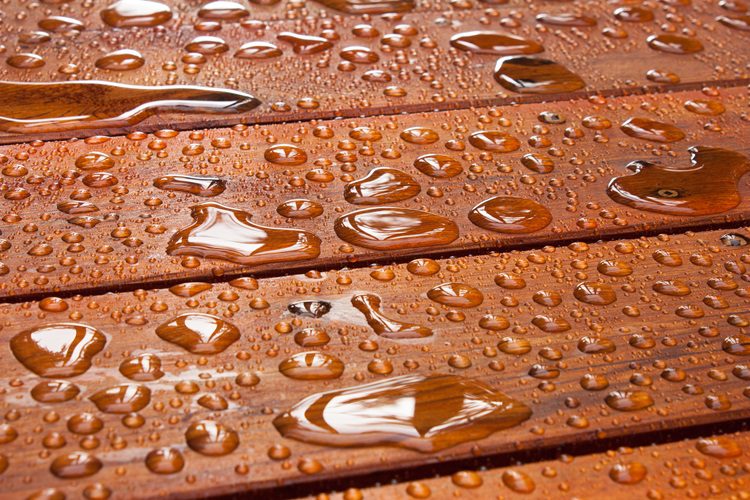Standing water on your deck can lead to potential problems if left unchecked. In this blog we explore what causes water pooling, how it can affect your deck, and what you can do about it.
What causes standing water on decking?
Water pooling is where water gathers in one place on your decking and does not drain away. This can be caused by several factors such as incorrect deck board spacing, the lack of a slope on your wide PVC decking, uneven decking, or an incorrect drainage system.
How can water pooling affect composite decking?
Water pooling can not only make your deck look unsightly, but also affect your boards slip resistance and reduce their life span.
Whilst composite decking is less prone to water damage than timber decking, water pooling can still cause damage to its internal construction. If you allow water to stand on your decking for a long period of time, it will gradually seep into the deck board and weaken its structure, causing it to warp, rot, and crack.
The best way to stop water pooling is through prevention, rather than cure.

Four ways to prevent standing water on decking
There are several ways you can prevent water pooling on your composite decking.
1. Ensure your decking is sloping appropriately
A rule of thumb is to work to a degree of decline of 1% (100mm drop per 10m length). This will create a subtle slope which although is not noticeable, will allow water to run off the deck naturally. Check out your manufacturer’s installation instructions for more information on slopes.
2. Ensure the spacing between your deck boards is correct
Whilst this spacing is to allow the composite boards to expand and contract without impacting neighbouring boards, it also helps with drainage and allows water to run through the decking rather than sitting on top of it. Again, check out your manufacturer’s installation instructions for the correct spacing of your boards.
3. Ensure the decking subframe is level and solid
Make sure the joists in the framework are level on install and ensure your base is well packed down, as ground movement can cause some areas to dip causing water to pool.
4. Regular maintenance
Regularly cleaning and brushing your deck will help to remove any leaves and debris that could be preventing water from running away freely.

Dealing with standing water already on decking
If you already have standing water on your decking, the easiest way to remove it is simply by mopping it up. Towels, squeegees, and other cleaning cloths can also be used, however, do not use a hard bristled brush as this may mark the surface of your decking.
This regular clearing of water will help to prevent the build-up of moisture and water on the deck’s surface.
Can standing water affect the subframe?
Yes, it can! If standing water is allowed to remain on top of timber joists, it can begin to penetrate them and the rest of the subframe – and a wet subframe can deteriorate rapidly.
Alternatively you can use composite joists and support beams rather than timber ones. This means your frame will have the same durability and robustness as your deck boards – with the correct installation and ongoing care!
If you’d like further information on how to care for your composite decking boards, or if you are thinking of making the move to composite from traditional timber, call our expert team today on 01978 667 840.
